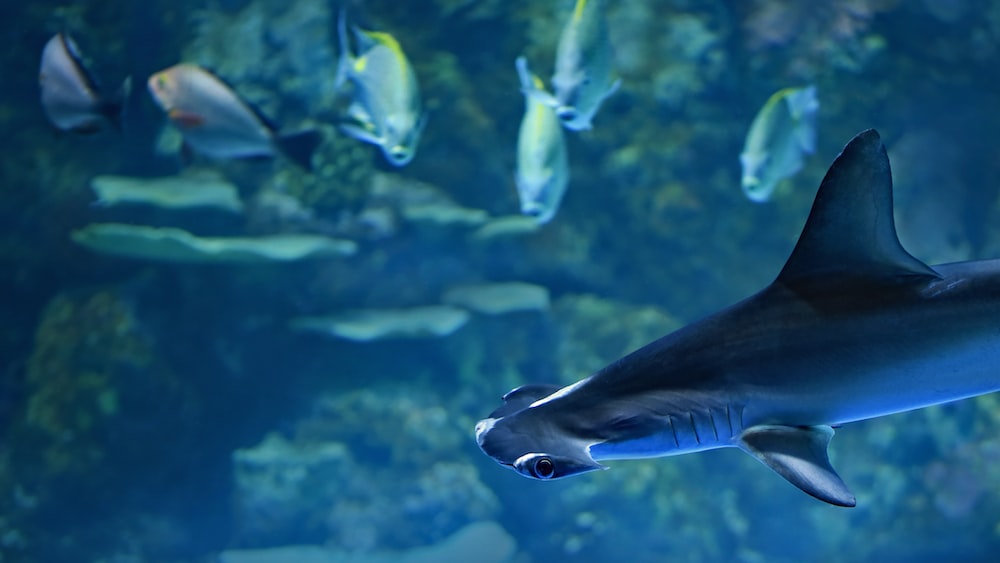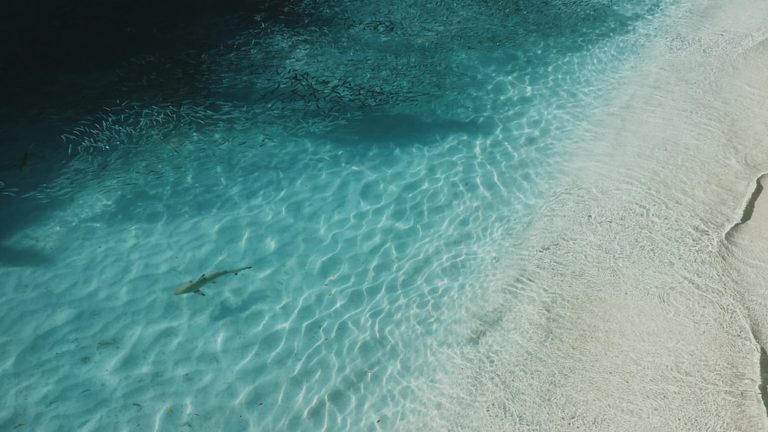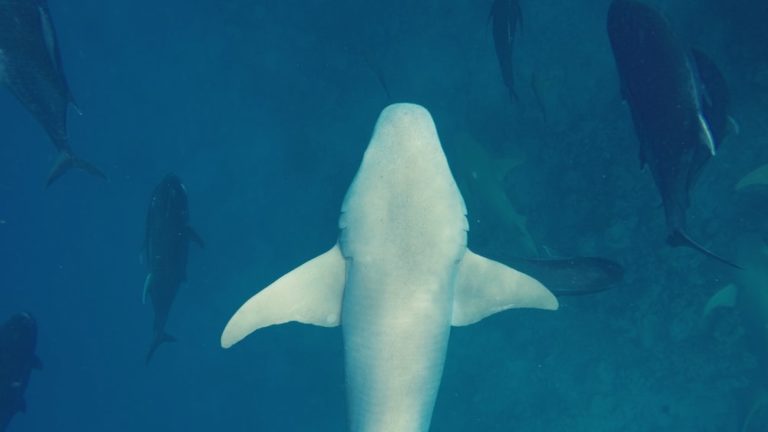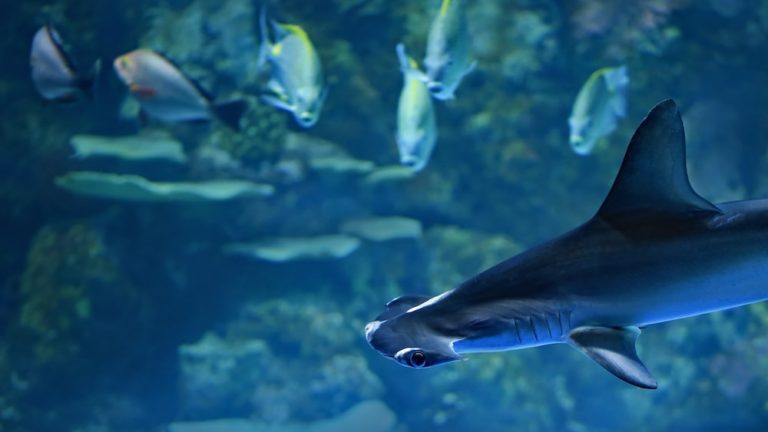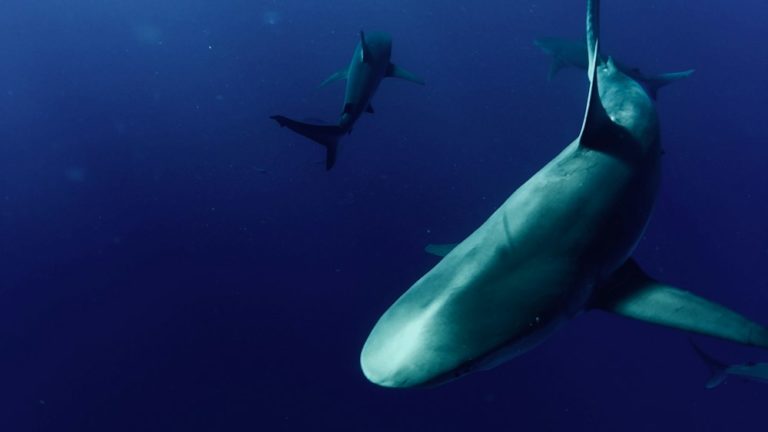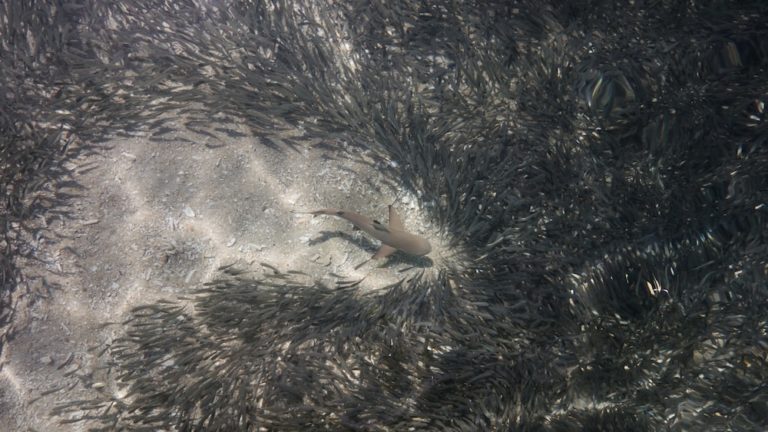Does A Shark Have A Skeleton? Unveiling The Truth
Does A Shark Have A Skeleton? Unveiling The Truth
When you think of the robustness of the marine apex predators, a question that may bubble up in the curious mind of a marine life enthusiast is, does a shark have a skeleton? This is not some sort of fishtale – sharks indeed have skeletons, but they are not your garden-variety bone structures. Sharks, those majestic rulers of the deep blue, glide through their underwater kingdom with a unique form of support system. Their build is one of nature’s marvels, enabling effortless movement and impeccable survival tactics.
Key Points:
- Sharks have a skeleton made entirely of cartilage, which is lighter and more flexible than bone.
- The cartilaginous skeleton provides sharks with flexibility, buoyancy, and efficient movement in their underwater environment.
- Sharks’ reliance on cartilage over bones grants them unmatched flexibility and movement for outmaneuvering agile prey.
- Cartilage also contributes to the quicker growth cycle for sharks compared to bony vertebrates, strengthening their chances in the oceanic competition.
- Sharks play an indispensable role as top predators in marine ecosystems, and their cartilaginous skeleton is a key piece of the puzzle.
- Sharks do not have bones; their skeletons are made completely of cartilage, offering greater flexibility and buoyancy for their survival as marine predators.
The skeleton of a shark is like the ocean’s enigma, lighter than bone yet strong enough to hold together an impressive predatory body. As eco-adventurers, understanding the anatomy of these creatures can enrich our knowledge and appreciation of them. In this dive into the undersea world, we shall unravel the mysteries of shark anatomy, shedding light on the evolutionary marvels that equip these creatures for oceanic supremacy.
Join me on an educational expedition beneath the waves as we venture to answer the titillating question: does a shark have a skeleton? Along the way, we’ll debunk myths, explore practical insights into their world, and foster a deeper connection with these awe-inspiring animals. Fasten your snorkels, marine conservationists, for this is no ordinary swim – it’s a deep dive into the very connective tissue of oceanic life.
The Composition of a Shark’s Skeleton
The backbone of a shark’s prowess lies quite literally in its skeletal composition. Unlike their terrestrial counterparts, sharks boast a skeleton made entirely of cartilage, the connective tissue that we typically associate with the flexibility in the human nose and ears. This cartilaginous structure is the framework that supports the dynamic lifestyle of these formidable predators.
Cartilaginous Skeleton: The Basics
The basics of a cartilaginous skeleton are quite fascinating. This type of skeletal structure in sharks is comprised of cartilage, a lightweight and flexible material, which is considerably less dense than bones. It serves as the primary component of the skeleton from the tip of their nose to the end of their tail fin, giving sharks their characteristic sinuous motion.
Cartilage is not just a single uniform material – it spans a range of types and densities within sharks’ bodies. Some areas, such as the jaws, may become denser or partially calcified to endure the demands of their predatory feasts. However, despite these variations, the uniformly cartilaginous blueprint grants sharks a notable strategic advantage in their habitat.
Sharks’ cartilaginous skeleton gives them a strategic advantage due to its lightweight and flexible nature, allowing for their characteristic sinuous motion.
Comparing Cartilage to Bone
Comparing cartilage to bone is like contrasting a submersible to a battleship; both serve to navigate waters, yet they are designed for vastly different experiences. Bone is rigid, dense, and heavy, typically suited for terrestrial life, whereas cartilage is pliant, offering more give under pressure and is lighter which allows for an aquatic ballet of motion.
This comparison goes beyond mere physical differences. Cartilage requires less energy to grow and maintain, which meshes well with the energy-efficient lifestyle sharks lead. While bones can repair and regrow when broken, cartilage offers a unique resilience and flexibility that are indispensable assets for the shark’s survival in the vast and unpredictable marine environment.
Evolutionary Advantages of Cartilage
Sharks have swum the world’s oceans for around 400 million years, and their evolution has honed the cartilaginous skeleton into a natural advantage. What might first seem like a simpler structure compared to the bony skeletons of other vertebrates is, in fact, a masterclass in evolutionary design.

Flexibility and Movement
Sharks’ reliance on cartilage over bones is no accident of nature – it is a deliberate advantage that grants them unmatched flexibility and movement in their underwater realm. Without the rigidity that bones provide, sharks can navigate twisting and turning with nimble precision.
Their cartilaginous skeleton allows sharks to make quick and sudden direction changes, an essential skill for predators that must outmaneuver agile prey. This flexibility is also evident in the efficient waves of motion that travel down a shark’s body as they propel themselves forward, a mesmerizing sight for any underwater observer.
Buoyancy and Oceanic Adaptation
A consideration just as crucial as flexibility is buoyancy. A bony skeleton would weigh a shark down, but cartilage has a much lower density, helping to keep sharks afloat – or rather, neutrally buoyant in their salty oceanic habitat. This adaptation means sharks don’t waste energy fighting gravity, a plus for endurance hunters.
Moreover, sharks do not possess swim bladders, organs that many bony fish use to control buoyancy. Instead, sharks rely on their cartilaginous skeletons and large, oil-filled livers to maintain the perfect balance between sinking and floating, enabling them to glide effortlessly at varying depths.
Buoyancy is a crucial consideration for sharks, as their cartilaginous skeletons and oil-filled livers help them maintain the perfect balance between sinking and floating, enabling effortless movement at varying depths.
The Anatomical Structure of Sharks
As we delve further into understanding the question, “Does a shark have a skeleton?”, it becomes evident that the anatomical structure of sharks is a testament to their evolutionary prowess. While they lack bones, this absence is hardly a shortcoming but rather a strategic adaptation that has played a significant role in their success as top predators.
The Role of Cartilage in Shark Anatomy
In sharks, the role of cartilage goes beyond mere support – it’s an integral component of their anatomy that influences their hunting tactics, reproductive strategies, and overall survival. Unlike bones, cartilage is lighter and more flexible, contributing to the shark’s ability for sudden bursts of high speed and the fluidity of movement required for catching their dinner.
The skeletal structure constituted by cartilage also means a quicker growth cycle for sharks compared to bony vertebrates, enabling them to reach maturity more rapidly and thus strengthening their chances in the hard-nosed ocean competition. It’s a game of survival, and cartilage offers sharks a VIP pass in the circle of life.
Unique Features of Shark Skeletons
The skeletons of sharks are more than just a biological framework; they harbor unique features that are emblematic of these creatures’ evolutionary history. Cartilage shapes everything from the graceful arch of their dorsal fins to the formidable gape of their jaws.
Several species of sharks show fascinating skeletal adaptations; for instance, the hammerhead’s distinct head shape, known as the cephalofoil, is supported by cartilaginous extensions that give it an enhanced field of vision and sensory perception. Each element of the shark’s cartilaginous skeleton is honed for survival and efficiency, ensuring its legendary status in the marine world.
Misconceptions About Shark Skeletal Systems
Despite the prevalence of sharks in the oceanic narratives of science and folklore, several misconceptions about their skeletal systems persist. The belief that sharks, being mighty hunters, must have solid bones like land-based predators is a common oversight that overlooks the marvel that is their cartilaginous anatomy.
Debunking Common Myths
We’ve all heard the tall tales and shark stories that seem a bit fishy. From the myth that sharks are essentially swimming bones to the belief that these creatures are indestructible, misconceptions about sharks’ skeletal systems run rampant. Sharks do not have a bone in their body; their skeleton is made entirely of cartilage, which is lighter and more flexible than bone.
Certain species, like the always fascinating elephant shark, actually have skeletons that are more calcified, giving the impression they might break the cartilage-only rule. However, it’s important to note that even these calcifications are not truly bony structures. Another common myth is that a shark’s cartilage can heal rapidly and regenerate, which, despite its resilience compared to bone, is a bit of an overstatement and oversimplifies the regeneration capabilities of cartilage.
Historical Perspectives on Shark Anatomy
Throughout history, sharks have always spurred the imagination and curiosity of humankind. Ancient cultures depicted sharks as fearsome sea creatures, and their skeletal structure has been a subject of myth and legend. The flexibility of their fins was often exaggerated to mythical proportions, with some stories recounting sharks folding themselves into impossible shapes.
It was not until the advancement of marine biology that scholars realized the structural simplicity and efficiency of the cartilaginous skeleton. It gave us a profound respect for these animals, as early marine biologists began to piece together the practicality and evolutionary marvels found within the shark’s internal architecture.
Sharks have long captivated human imagination, with ancient cultures depicting them as fearsome creatures and their skeletal structure being the subject of myth and legend, until the advancement of marine biology revealed the practicality and evolutionary marvels within their internal architecture.
The Ecological Significance of Sharks’ Skeletal Structure
Predatory Efficiency and Survival
The shark’s cartilaginous skeleton is far from a flimsy framework; it is a masterclass in efficient design shaped by millions of years of evolution. Their lightweight, flexible skeletons afford them stellar maneuverability, which is vital for chasing down swift prey or making quick turns. The reduced weight of these skeletons compared to bone allows for a low fatality rate from physical trauma, which is essential for the survival of these apex predators.
Sharks have powerful tail fins that propel them with bursts of speed, and their cartilaginous structure is undoubtedly linked to their role as formidable hunters. This evolved trait ensures they keep the balance of species in check within marine ecosystems, showing the natural world’s intricate connections.
Sharks’ Role in Marine Ecosystems
In the grand tapestry of the ocean, sharks play an indispensable role as top predators, and their skeletal structure is a key piece of the puzzle. Cartilage provides the necessary flexibility for sharks to twist and contort their bodies when pursuing prey or navigating through tight spaces, ensuring their position as effective regulators of species population.
Without their lightweight, agile skeletons, sharks would not be able to perform their essential duties in the oceanic food web. The balance of marine life rests partly on their cartilaginous frames, which speaks volumes about the importance of every anatomical detail in these predators. Understanding sharks’ ecological significance helps highlight why they must thrive for the health of our oceans.
FAQs
1. Do sharks have any bones at all?
Sharks do not have bones; their skeletons are made completely of cartilage.
2. How does a shark’s skeleton differ from other fish?
A shark’s skeleton differs from other fish in that it’s composed entirely of cartilage rather than bone, making it lighter and more flexible.
3. Why don’t sharks have a bony skeleton like other vertebrates?
Sharks don’t have a bony skeleton because their cartilaginous structure offers greater flexibility and buoyancy, which aids in their survival as marine predators.
4. Can sharks’ cartilaginous skeletons fossilize?
Although cartilage is less likely to fossilize than bone, under the right conditions, sharks’ cartilaginous skeletons can indeed fossilize.
Conclusion
In our exploration, we’ve circled around the fascinating world of shark biology and debunked the myth circling the question, does a shark have a skeleton. Time and tide wait for no one, and neither does the need for a deeper understanding of these charismatic creatures. Throughout the currents of knowledge, we’ve dived deep into the evolutionary marvels and ecological roles sharks play in the vast blue sea.
Their cartilaginous skeleton provides a unique advantage, ensuring sharks’ survival and efficiency as marine predators for eons. Such insights fuel our appreciation and ignite a passion for protecting these sentinels of the sea. As marine life enthusiasts, eco-adventurers, and conservationists, let’s keep this dialogue going, like the endless waves that sharks call home. And with a final dip below the surface, I bid you farewell, until our next dive into the deep. Keep making waves for conservation.
Warm regards,
Jasper Flynn.

